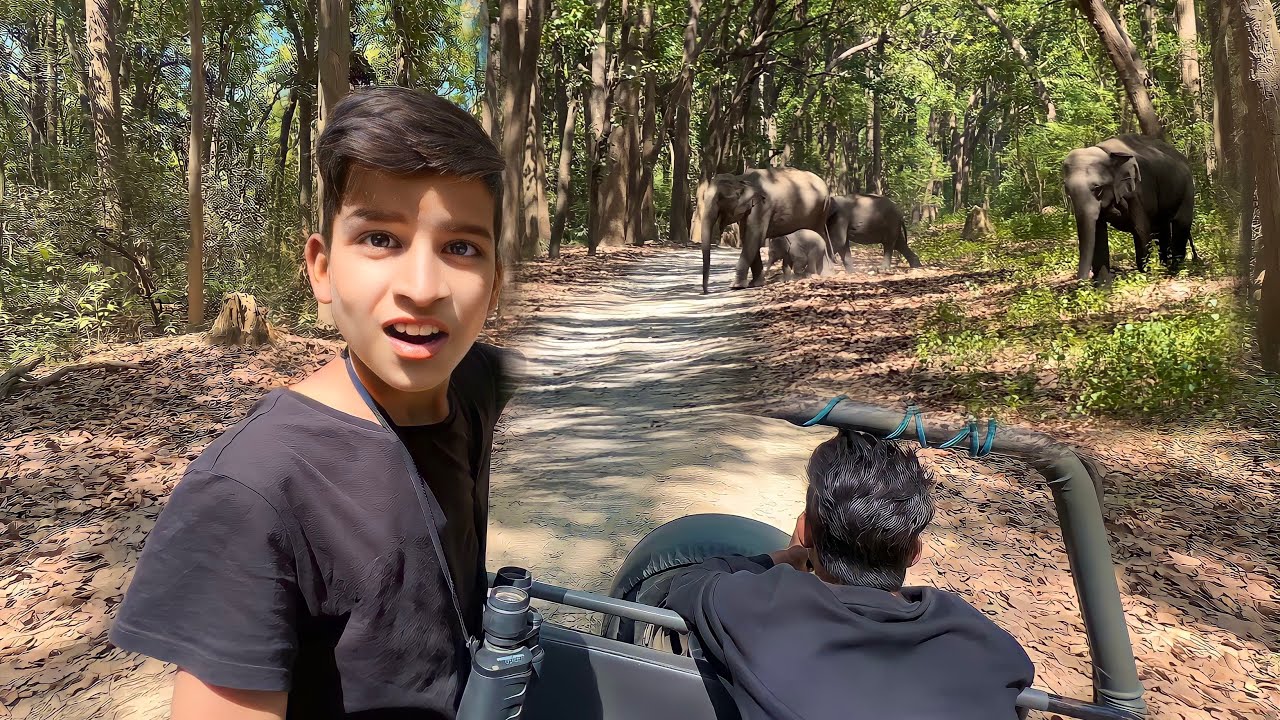Jim Corbett National Park, nestled in the Nainital district of Uttarakhand state, stands as a testament to India’s rich biodiversity. Established in 1936 during the British Raj and originally named Hailey National Park after William Malcolm Hailey, a governor of the United Provinces, it has since become synonymous with wildlife conservation and adventure. When you think of Jim Corbett National Park, what is the first animal that comes to mind? Or Jim Corbett National Park is famous for which animal?
Animals Found in Jim Corbett National Park
- Bengal Tigers: Known as the apex predators of the park, Bengal Tigers roam the dense forests, making Jim Corbett National Park one of the prime destinations for tiger sightings in India.
- Leopards: Stealthy and elusive, leopards thrive in the rocky terrain and dense foliage, providing visitors with rare opportunities to witness these majestic big cats in their natural habitat.
- Asian Elephants: Towering over the landscape, Asian Elephants gracefully traverse the park’s valleys and riverbanks, contributing to its diverse ecosystem.
- Spotted Deers: Graceful and agile, spotted deer, also known as chital, are a common sight in Jim Corbett National Park, adding to its picturesque charm.
- Sambar Deers: With their majestic antlers and imposing presence, sambar deer are another iconic species found in the park, offering visitors a glimpse of India’s rich wildlife heritage.
- Gharials: These prehistoric-looking creatures find refuge in the rivers and streams of Jim Corbett National Park, showcasing the park’s importance as a conservation hotspot for endangered species.
- Langur Monkeys: Playful and acrobatic, langur monkeys swing through the treetops, bringing a sense of liveliness to the serene surroundings of the park.
- Rhesus Monkeys: Agile and adaptable, rhesus monkeys are a familiar sight in Jim Corbett National Park, adding to the diversity of its wildlife population.
- Asiatic Black Bears: Shy and elusive, Asiatic black bears inhabit the remote corners of the park, offering visitors a rare glimpse into the wilderness of India.
- Indian Pangolins: Rare and enigmatic, Indian pangolins are among the lesser-known residents of Jim Corbett National Park, highlighting its role as a haven for unique and endangered species.
How to Reach Jim Corbett Park?
Jim Corbett National Park is accessible through various modes of transportation, ensuring that visitors can embark on their wildlife adventure with ease.
By Road: The park is well-connected by road, with regular bus services from nearby cities like Delhi, Dehradun, and Lucknow. Private taxis and self-driven vehicles offer a more personalized travel experience, allowing visitors to enjoy the scenic beauty along the way.
By Air: The nearest airport to Jim Corbett National Park is inPant Nagar, approximately 50 KM away. From there, visitors can avail of taxi services or private transfers to reach the park, ensuring a hassle-free journey.
By Train: The nearest railway station to Jim Corbett National Park is in Ram Nagar, which is well-connected to major cities like Delhi and Lucknow. From Ram Nagar, visitors can hire taxis or utilize local transport to reach the park, making it convenient for travelers from all corners of the country.
Whether you’re a wildlife enthusiast, adventure seeker, or nature lover, Jim Corbett National Park offers an unparalleled experience amidst the breathtaking landscapes and diverse wildlife of India.







